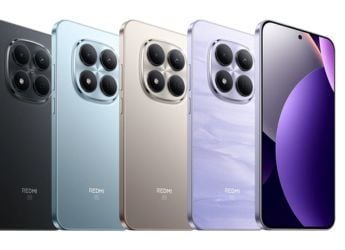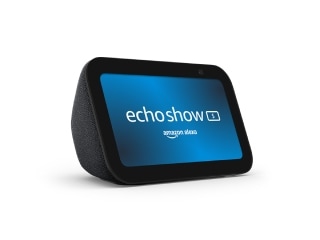LG G7+ ThinQ Review

LG’s smartphone endeavours haven’t quite hit the same stride as its Korean rival Samsung in recent times. Globally, LG still has a big portfolio of smartphones, but of late, India seems to be getting fewer launches. Take for instance its flagship for 2018, the G7 ThinkQ. LG launched this model just before Google I/O this year, where it partnered with the search giant to launch the first Android phone with a dedicated hardware button for Google Assistant.
Three months in, and LG has quietly snuck the G7+ ThinQ into India without any fanfare, which is really odd considering its aggressive price of Rs. 39,990. This puts it smack against the 8GB version of the OnePlus 6 (Review), and on paper, it appears to offers even better specifications. The OnePlus 6 has been our solid recommendation so far at around this price, although we’ve always felt that features like wireless charging and proper waterproofing would have complemented the package nicely. The LG G7+ ThinQ addresses these shortcomings, and now it’s time to see if it truly is what the OnePlus 6 should have been all along.
LG G7+ ThinQ design
The ‘ThinQ’ suffix signifies the use of artificial intelligence (AI), which was introduced by LG at this year’s CES. The G7+ ThinQ is the successor to last year’s flagship LG G6 (Review) smartphone. It features an aluminium frame that’s wide enough on the sides to be easy to grip, and you get Corning Gorilla Glass 5 for the front and back. The glass blends quite seamlessly with the metal so you barely feel the edges. The side effect of this is fingerprints and smudges, which we know are hard to avoid, but the G7+ ThinQ attracts far more than usual.
The buttons are easy to reach and have good feedback. The dedicated Google Assistant button can be disabled through the Settings app if you don’t want to use it, but LG doesn’t let you re-map it. When your phone is unlocked, a single press opens Google Assistant, while a double press opens Google Lens. In order to avoid accidental activation when your phone is locked, you need to either press it twice or hold it for a few seconds to summon Assistant.
![]()
The 6.1-inch IPS screen boasts of an impressive 1000nits of brightness, which translates to excellent legibility under direct sunlight. You also get a QHD+ resolution of 1440x3120 so images and text look sharp. The G7+ ThinQ has a notch, or as LG calls it, a ‘New Second Screen’. You have the option to mask it and use different background images, but we found that the default black looks best. You can enable the always-on-display feature too, which gives you interactive toggles for Wi-Fi, Bluetooth, etc. and playback buttons for the music player. Unfortunately, since this isn’t an OLED panel, the backlight for the entire display needs to stay on instead of just the required pixels. In a pitch dark room, you can faintly see the backlighting.
The notched area has enough room for the earpiece, notification LED, sensors, and a front camera. The borders around the display aren’t very slim and there’s a noticeable chin at the bottom too. The hybrid dual-SIM tray is placed on the top and this phone supports two 4G VoLTE connections at the same time. The second slot can be used for storage expansion at the cost of a second SIM. At the bottom, we have a 3.5mm headphone socket, a USB Type-C port, and a single speaker grille. Despite not having stereo speakers, the G7+ ThinQ uses the body as an acoustic chamber, which helps amplify the volume. During audio playback, you can feel the back of the phone vibrate.
![]() The screen space beside the notch can be customised with different backgrounds
The screen space beside the notch can be customised with different backgrounds
The two vertically stacked cameras at the back sit nearly flush with the body and feature Gorilla Glass 4 protection, which is nice. Beside them, we have a single-LED flash and the laser autofocus sensors. The fingerprint sensor is centred a little below the cameras. The sensor is quick at authentication but you also have the option for face recognition. Face unlock kicks in when you raise the phone upwards towards you, but isn’t too secure at the default setting. It’s quick but we found that a simple 2D picture of the registered face is enough to fool it. You can enable ‘Advanced face recognition’ which makes things a bit more secure, but authentication takes longer and it doesn’t work well in low light.
In the box, the LG G7+ ThinQ ships with a charger, data cable, headset, SIM eject tool, and microfibre cleaning cloth. In terms of usability, the G7+ ThinQ has comfortable proportions and doesn’t weigh too much. The tall display is a bit of challenge for one-handed use, but you can there’s a gesture to shrink the contents down for easier access. Other accessibility options like Floating Bar, which offers shortcuts for music player, contacts, screen capture, etc, also help in getting around quickly.
LG G7+ ThinQ specifications and features
Being a flagship smartphone, LG has gone with Qualcomm’s Snapdragon 845 octa-core SoC. The ‘+’ model that’s been launched in India has 6GB of RAM and 128GB of internal storage. The phone is IP68 certified or dust and water resistance, and is also shock resistant to some degree, with a military standard (MLT-STD-810G) certification. LG claims to have used a heat pipe to cool the SoC, so we expect good thermals when gaming. Other connectivity options include dual-band Wi-Fi 802.11ac, Bluetooth 5, NFC, USB-OTG, wireless charging, and a healthy suite of sensors.
At the time of this review, our retail unit was running on Android 8 Oreo with the June 1 security patch. Android is heavily customised and we can’t help but draw comparisons to Samsung’s Experience skin. From the customisable folder colours to the little suggestion boxes at the end of every sub-menu in the Settings app, it all feels very familiar. There are loads of additions made to the software, letting you really fine-tune your user experience. However, gestures for navigation are noticeably missing.
The LG G7+ ThinQ offers plenty of customisation and added software features
The UI layout can be changed from single-layered to the traditional app drawer layout; the positions of the navigation buttons can be swapped around and additional ones can be added for SIM switching, etc.; Smart Doctor helps clean up temporary files and free up RAM; and Game Tools lets you set the display resolution for each game and offers an in-game overlay for disabling alerts, taking a screenshot, etc.
LG has a feature called AirDrive, which is supposed to let you manage the files on your phone, through your Mac or PC. You’ll need the LG Bridge app on your computer and you’ll need to be signed into the same account on your phone and the desktop app. However, unlike Apple’s AirDrop, you can’t share files like photos directly from the phone’s gallery to your PC. Instead, you have to do it through the file manager app. We were unable to view the files on our phone through the desktop app but we could see all our folders through the File Manager app. In the end, we rarely found much use for this, and it was quicker to just use a cable to transfer files.
You get some pre-installed apps too. QuickMemo+ is a note-taking app that also syncs to your Google account; Mobile Switch lets you migrate data from your old phone over to the G7+ ThinQ; SmartWorld offers curated content like news, themes, wallpapers, etc; and LG Service lets you book an appointment at your nearest service centre.
LG G7+ ThinQ performance, cameras, and battery life
The heavy customisations to Android can be a bit overwhelming at first, even for experienced users, but after a while, you sort of get used to it. Overall , the LG G7+ ThinQ runs pretty much flawlessly with day-to-day usage. The interface feels snappy and doesn’t get bogged down even with a lots of apps running in the background. Call quality is good, and the phone doesn’t heat up with general usage. The Snapdragon 845 SoC is a proven performer, but most of the benchmark scores that this phone achieved were a bit lower than those of other phones based on this same SoC. Games run fine, including newer titles like PUBG and Asphalt 9: Legends.
The phone does get quite warm while gaming or even with heavy camera use, but not to a point where it’s uncomfortable to hold, and this isn't consistent behaviour. With most phones, it's only a small portion of the back that heats up, but pretty much the entire back of the G7+ ThinQ gets warm, including parts of the metal frame. At times, we noticed it happen even when there was only background data activity, like while downloading an app from the Play Store.
![]()
LG’s flagship offerings have often been lauded for having good audio, and the G7+ ThinQ is no different. The Quad-DAC feature is present, along with other audio enhancements such as DTS:X 3D surround for wired headphones. The bundled headphones are not bad, offering decent ambient noise isolation and good audio quality. The default music player also has some gimmicky effects called Flash Light and Boombox Show, which use the rear LED flash for strobe-light effect, and display 3D visualisations on the screen, respectively. The mono speaker is impressively loud, which is nice. The display also supports the HDR 10 standard which adds more dynamism to colours when watching HDR videos.
LG’s ThinQ AI can be seen in action in the camera app. With ‘AI Cam’ turned on, the camera app scans the frame and automatically adjusts the exposure and colour temperature, and even applies filters if necessary. LG has implemented some cool visualisations where words fade in and out, Sherlock Holmes style, in the viewfinder as the AI tries to figure out the subject in focus. We wish we had the option to disable the AI effects after shots are taken but thankfully, it’s not too intrusive like we’ve seen on other phones like the Huawei P20 Pro (Review). Due to LG’s close partnership with Google, the G7+ ThinQ also gets AR stickers from the Pixel line of smartphones.
![]()
![]() Shot using the wide-angle, 16-megapixel sensor on the LG G7+ ThinQ. Tap to see full-sized images.
Shot using the wide-angle, 16-megapixel sensor on the LG G7+ ThinQ. Tap to see full-sized images.
The main 16-megapixel camera has a f/1.6 aperture while the second wide-angle 16-megapixel camera gets a f/1.9 aperture. The main sensor captures good detail in closeups and landscapes along with punchy colours, but the edges around subjects could be more distinct. The HDR feature kicks in automatically but we often found that portions of bright areas appeared overexposed. The wide-angle camera is useful when shooting landscapes or a group of people, and barrel distortion isn’t much of an issue here.
Details are fairly good in low light too. The camera app has a mode called Super Bright Camera, which combines the data of four pixels into one, thus giving you better detail but at the cost of resolution. There’s OIS for the primary sensor, which helps keep shots steady in unfavourable light. The phone does a good job with edge detection in Portrait mode, and the amount of background blur can be adjusted before and after you take the shot.
Video recording maxes out at 4K 30fps but you don’t get electronic stabilisation at this resolution. Videos shot at 4K have slightly boosted colours which is most evident when shooting with the wide-angle sensor. There have been reports of LG releasing an update enabling 4K 60fps recording on this phone, but our unit didn’t seem to have received it. Stabilisation is decent at 1080p 30fps and focusing is quick too, but there is a noticeable shimmer in the footage, which isn’t present when using the wide-angle lens.
![]()
![]()
![]() Tap to see full-sized LG G7+ ThinQ camera samples
Tap to see full-sized LG G7+ ThinQ camera samples
There’s a comprehensive manual mode that lets you tweak audio parameters such as gain, and filter out wind noise. You also get slow-motion video mode, which lets you shoot at 240fps, but the quality is quite average. The Cine Video mode gives you pretty cool filters and cinematic zoom effects.
The front 8-megapixel sensor captures good selfies, and the AI features work here too. There’s no Auto HDR though and it doesn’t work well all the time. Stabilisation works decently, which is good if you’re into vlogging. In low light, you have the option to use the screen flash to improve image quality.
The 3000mAh battery easily lasts an entire workday, but getting a full 24 hours’ worth of use is a bit challenging, especially if you game a lot. With a bit of Bluetooth audio streaming, a few calls, use of Chrome and messaging apps, and few rounds of Asphalt 9: Legends, we typically clocked about 17 hours of runtime on average before we had to plug in the charger. This isn’t bad but certainly could have been better. Our internal battery loop test ran for 11 hours and 48 minutes, which is slightly above average. There’s Qualcomm Quick Charge 3.0 support, which got us a 42 percent charge in roughly 30 minutes. Charging the phone completely takes a little under two hours.
Verdict
The G7+ ThinQ is a solid offering from LG, and more importantly, it’s available at a very aggressive price. For all those who were on the fence about the OnePlus 6 due to its lack of some features such as weather resistance and wireless charging, the G7+ ThinQ is a very good alternative. LG’s offering also features a more useful secondary rear camera, expandable storage, an excellent mono speaker, and a vivid and crisp display.
There are some aspects of the phone that might not be to everyone’s liking. For instance, the custom interface has an overwhelming number of features which might be intimidating, Face recognition is a bit slow, and the cameras, while good, have some missing features such as stabilisation at 4K resolution and super-slow-motion shooting modes.
Barring these little niggles, LG seems to have thrown everything but the kitchen sink into the G7+ ThinQ, and from a pure value point of view, it’s really hard to beat.
Catch the latest from the Consumer Electronics Show on Gadgets 360, at our CES 2026 hub.
Related Stories
- Samsung Galaxy Unpacked 2025
- ChatGPT
- Redmi Note 14 Pro+
- iPhone 16
- Apple Vision Pro
- Oneplus 12
- OnePlus Nord CE 3 Lite 5G
- iPhone 13
- Xiaomi 14 Pro
- Oppo Find N3
- Tecno Spark Go (2023)
- Realme V30
- Best Phones Under 25000
- Samsung Galaxy S24 Series
- Cryptocurrency
- iQoo 12
- Samsung Galaxy S24 Ultra
- Giottus
- Samsung Galaxy Z Flip 5
- Apple 'Scary Fast'
- Housefull 5
- GoPro Hero 12 Black Review
- Invincible Season 2
- JioGlass
- HD Ready TV
- Laptop Under 50000
- Smartwatch Under 10000
- Latest Mobile Phones
- Compare Phones
- Tecno Spark Go 3
- iQOO Z11 Turbo
- OPPO A6c
- Samsung Galaxy A07 5G
- Vivo Y500i
- OnePlus Turbo 6V
- OnePlus Turbo 6
- Itel Zeno 20 Max
- Lenovo Yoga Slim 7x (2025)
- Lenovo Yoga Slim 7a
- Realme Pad 3
- OPPO Pad Air 5
- Garmin Quatix 8 Pro
- NoiseFit Pro 6R
- Haier H5E Series
- Acerpure Nitro Z Series 100-inch QLED TV
- Asus ROG Ally
- Nintendo Switch Lite
- Haier 1.6 Ton 5 Star Inverter Split AC (HSU19G-MZAID5BN-INV)
- Haier 1.6 Ton 5 Star Inverter Split AC (HSU19G-MZAIM5BN-INV)


















